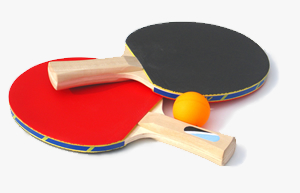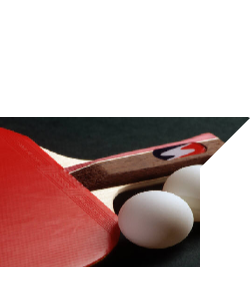|
|
|
Note: All prices in US Dollars
|
 |
- Table tennis paddle handles come in two basic types called shakehand and penhold, based on the way they are gripped. Shakehand paddles come in anatomic (broad middle with tapered neck), flared (wide base with concave center), padded, and straight varieties.
- Table tennis paddles are also known as ping-pong paddles, rackets, and bats. While the terms are used interchangeably, the International Table Tennis Federation uses the term "racket."
- According to ITTF rules, a table tennis paddle may be of any size, shape, or weight, so long as the blade is flat and rigid.
- Also according to ITTF rules, natural wood must account for at least 85% of the blade thickness. An adhesive layer within the blade may be reinforced with fibrous material such as carbon fiber, fiberglass, or compressed paper, but shall not be thicker than 7.5% of the total thickness of the paddle.
- If both sides of a table tennis paddle are used to strike the ball, the runner must be red on one side and black on the other so the opponent can anticipate spin. If only one side is used, it may be either red or black. You'll find that other colors are available for use in home and recreational play.
- The sponge layer of a table tennis paddle is between the blade surface and the wood. Sponge thickness helps determine the action of the ball. Thin sponge layers produce less spin and speed, while thicker layers produce dramatic spin and velocity. No sponge is the best defensive option for players who seek precise control.
- Sponge density is also important. Softer, less dense sponge layers work well for players with shorter, slower strokes. Hard, dense sponge layers are generally preferred by intermediate and advanced players who swing hard.
- When choosing a first table tennis paddle for a player who wants to improve, we recommend one with smooth rubber blades and thin sponge layers. While sponge-less, pips-out defensive blades are great for casual play, they don't leave a lot of room for skills development.
- Replace the rubber sheets of your table tennis paddle periodically, depending on how much you play. When you start to notice a drop-off in spin, it's probably time to resurface.
|

|
|
|
|




